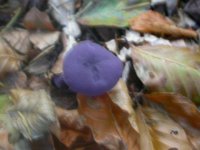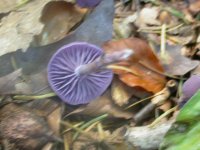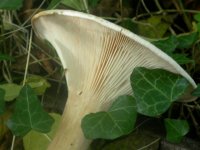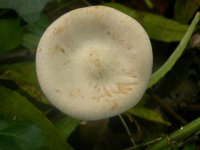Trolling through old beechwoods today, I came upon several different fungi. Here are photos of two of them, (camera shake did for the others - didn't take my tripod)
I think the first two photos are of Laccaria amethystina (mainly because they were the only lilac fungi in my book), but also because the gills were the same colour as the cap and there were loads in the beechwoods. (BTW what does "decurrent tooth" mean when referring to gills?)
The other two photos are of a fungi that I don't really have any idea of, although looking through my book, I can see some similarities to Clitocybe (decurrent gills and a distinct umbo). Size-wise, these were quite large fungi, although there were some smaller ones about too.
Any suggestions gratefully received.
Sonia
I think the first two photos are of Laccaria amethystina (mainly because they were the only lilac fungi in my book), but also because the gills were the same colour as the cap and there were loads in the beechwoods. (BTW what does "decurrent tooth" mean when referring to gills?)
The other two photos are of a fungi that I don't really have any idea of, although looking through my book, I can see some similarities to Clitocybe (decurrent gills and a distinct umbo). Size-wise, these were quite large fungi, although there were some smaller ones about too.
Any suggestions gratefully received.
Sonia







